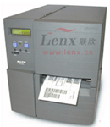RFID世界網(wǎng) >
新聞中心 >
企業(yè)動態(tài) >
正文
RFID電子標(biāo)簽應(yīng)用在電話機(jī)上
作者:Jonathan Collins
來源:rfidjournal
日期:2007-03-04 11:42:53
摘要:電訊設(shè)備生產(chǎn)商Funktel測試著將小的,圓柱型RFID電子標(biāo)簽嵌入到電話中印刷電路板(PCB)上。這種嵌入式生產(chǎn)方式是由德國自動化公司CompControl開發(fā)的,使用瑞土RFID標(biāo)簽生產(chǎn)商Sokymat 125Mhz RFID玻璃裝電子標(biāo)簽和CompControl的讀寫器及軟件,可以讀取到嵌入的標(biāo)簽,并將讀到唯一的序列號與其他焊在PCB上組件聯(lián)系起來。通過RFID標(biāo)簽,F(xiàn)unktel可以追蹤到電話的生產(chǎn)過程和成品庫存管理,同時也可提高產(chǎn)品質(zhì)量控制和售后服務(wù)。Sokymat標(biāo)簽是真密封在玻璃中,可防震蕩。這種只讀標(biāo)簽可儲存40個字節(jié)全球唯一序列號,據(jù)Sokymat稱在125Mhz頻段下的RF信號對PCB其他組件的運(yùn)行及電話運(yùn)行不會有影響。
Dec 7, 2005—Funktel, a manufacturer of telecommunications equipment for internal corporate communications, has been testing a manufacturing process that embeds a small cylindrical RFID tag in each of the printed circuit boards (PCBs) it uses to make its handsets.
The new manufacturing process was developed by German process-automation company CompControl. Using 125 kHz RFID glass-encased tags from Swiss RFID manufacturer Sokymat, as well as and a reader and software developed by CompControl, the system can read the PCB's embedded tag and associate its unique serial number with the other components mounted on that board.
"FunkTel has already manufactured 10,000 RFID-enabled boards, and next year plans for 100,000 more," says Christoph Limpert, a spokesman for CompControl, based in Gersfeld Rhön, Germany.
For each PCB equipped with an RFID tag, Funktel can use RFID to track its manufacturing processes and take inventory of its finished products. Funktel will use the tags as a way to improve product quality control and to enhance customer support. Malfunctioning phones returned by customers can have their RFID tag scanned, and the company will be able to know the components and other details of its production. "This way, if there is a problem with a phone, they can recall any other phones likely to have similar issues," says Limpert. There are also plans for customers to use the phones for applications such as access control, he adds.
The Sokymat tags are encased in glass to provide a hermetic seal, which makes the tags more resistant to damage caused by vibration. The read-only tags carry a 40-bit unique serial number.
According to Sokymat, the RF signals of a tag transmitting at 125 kHz will not interfere with the operation of other components on the board or the functioning of the phone the PCB is in. "Metal environments have almost no influence on the tag reading distance, and no interference with electronic parts on the PCBs," says Egon Konopitzky, vice president of Sokymat.
Putting RFID tags onto printed circuit boards, which are also used in computers and a host of other electrical items, may have enormous potential as a way to provide full product traceability. That lifecycle traceability, says Sokymat, would help manufacturers in the €30 billion worldwide PCB industry meet tougher international regulations regarding traceability, recycling and maintenance of high-value electronic units.
The new manufacturing process was developed by German process-automation company CompControl. Using 125 kHz RFID glass-encased tags from Swiss RFID manufacturer Sokymat, as well as and a reader and software developed by CompControl, the system can read the PCB's embedded tag and associate its unique serial number with the other components mounted on that board.
| An RFID tag is embedded in each printed circuit board used in Funktel's headsets. |
For each PCB equipped with an RFID tag, Funktel can use RFID to track its manufacturing processes and take inventory of its finished products. Funktel will use the tags as a way to improve product quality control and to enhance customer support. Malfunctioning phones returned by customers can have their RFID tag scanned, and the company will be able to know the components and other details of its production. "This way, if there is a problem with a phone, they can recall any other phones likely to have similar issues," says Limpert. There are also plans for customers to use the phones for applications such as access control, he adds.
The Sokymat tags are encased in glass to provide a hermetic seal, which makes the tags more resistant to damage caused by vibration. The read-only tags carry a 40-bit unique serial number.
According to Sokymat, the RF signals of a tag transmitting at 125 kHz will not interfere with the operation of other components on the board or the functioning of the phone the PCB is in. "Metal environments have almost no influence on the tag reading distance, and no interference with electronic parts on the PCBs," says Egon Konopitzky, vice president of Sokymat.
Putting RFID tags onto printed circuit boards, which are also used in computers and a host of other electrical items, may have enormous potential as a way to provide full product traceability. That lifecycle traceability, says Sokymat, would help manufacturers in the €30 billion worldwide PCB industry meet tougher international regulations regarding traceability, recycling and maintenance of high-value electronic units.

 登錄
登錄
 注冊
注冊














